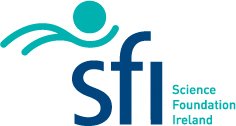30 Apr 2015
Optical probes, next-gen networks, nanowires, welding among 23 projects sharing €30m government cash.
The Irish government has announced it is to invest €30m to fund 100 research positions on 23 new research projects involving 40 companies – including several that are directly or closely-related to optical and photonics technologies.Damien English TD, Minister for Skills, Research and Innovation, said this week that the funding will be delivered by the Department of Jobs, Enterprise & Innovation through the Science Foundation Ireland Investigators Programme (SFI). The Programme is scheduled to provide funding over a four to five year period, with each project receiving between €500,000 to €2.3 million.
English commented, “This funding provides assistance to individual researchers to advance their investigations and address key research questions in sectors such as energy, medicine, food and nutrition, technology and agriculture. It allows researchers to further their careers and build partnerships with leading industry partners who also benefit from access to some of the leading academic talent on this island.”
Photonics-related projects
Among the projects there are several that are photonics-related, including:
For modern portable electronics, long-life, safe and high-performance lithium-ion batteries are a necessity. Project leader Colm O'Dwyer: “We will develop new materials and coating methods for a lithium-ion battery skin that can function when coated onto 3D printed structures. We are also planning a unique, non-destructive tool for monitoring the state of charge, showing the battery status by the color of the material, and could also be used during research to optimize the performance of these new materials to for better performance with longer lifetime.”
Marco Ruffini commented, “The main reason why many users experience inadequate broadband speeds is that the deployment of appropriate high-speed optical infrastructure to the customer home requires very large upfront investment. O’SHARE will target this problem by developing novel technologies to spread the infrastructure cost across a large number of service providers and network operators. O’SHARE will demonstrate the developed technologies in an international test-bed, supported by leading industry and academic collaborators.”
“Increasing the number of transistors on a silicon chip enables the production of faster and smaller mobile and computing devices,” says project leader Justin Holmes. “However, current and prospective future mobile devices based on existing technology are energy-inefficient due to high power consumption and the dissipation of heat. This project will develop new nanoscale materials for more energy-efficient electronic devices, leading to smarter and greener electronics.”
Alexey Lastovetsky commnented, “In our digital era, computing becomes truly comprehensive and ubiquitous with more and more areas routinely relying on high performance computing (HPC). Science, engineering, Internet-based computing, data analytics and data mining, financial computing, smart cities just to name a few all need HPC resources.
To respond to this ever-increasing demand, HPC systems become highly heterogeneous, hierarchical and extremely large and complex. Traditional applications and software cannot efficiently utilize this new generation of computing systems. The goal of the proposed research programme is to develop fundamental algorithms and methods that would allow application programmers to efficiently use these platforms.
Leaders Noel O'Dowd and Sean Leen say, “This proposal will develop new modeling tools for Irish industry for more accurate design and assessment of materials and structures. The focus will be on welds, which are the most common location of failure in engineering components. The tools will be used to provide tailored combinations of welding and heat treatment parameters, to design material structures at the nano-, micro- and macro-scale. Application areas are the design for optimum grain size in power-plant steels and improved designs for steel pipelines used in oil and gas offshore platforms.”
Stefano Sanvito, project leader said, “Our society produces immense quantities of data. The development of new, denser and faster ways to store information is key to maintaining global living standards. The MMDesign project will construct a range of designing tools for developing such next generation of recording devices. In particular, it will create a simulator for fast magnetic memories and a protocol for identifying the most useful materials to fabricate such devices.”
Professor Mark Ferguson, Director General of Science Foundation Ireland and Chief Scientific Adviser to the Government of Ireland added, “The SFI Investigators Programme provides important support to researchers in Ireland, creating employment opportunities and allowing them to leverage State funding to access additional funding streams, such as the EU’s Horizon 2020 Programme.
”Their research focuses on areas such as Alzheimer’s disease and cancer, animal breeding and disease prevention, ICT and data storage, as well as bioenergy among other topics. These are areas that will make a difference to both Ireland’s economy and society. All of the successful projects have been peer reviewed by international experts to ensure scientific excellence and we have funded every project deemed to be of the highest standard internationally.”

The SFI Investigators Programme alternates between thematic and open calls for proposals. The current call was thematic and included a new partnership with the Department of Employment and Learning in Northern Ireland. Projects supported under the partnership in Northern Ireland will be announced at a later date. Further etails of the thematic areas can be found here.
The call for applications for the 2015 Investigators Programme (IvP 2015) is currently open. The call aims to stimulate and catalyse strong participation by Ireland’s researchers in the European Commission’s Horizon 2020 research framework programme (H2020). In recognition of the national importance of H2020 and the need to demonstrate a collaborative all-island approach, SFI announced that the IvP 2015 call involves the participation of a number of Government Departments and funding agencies.
About the Author
Matthew Peach is a contributing editor to optics.org.
| © 2025 SPIE Europe |
|